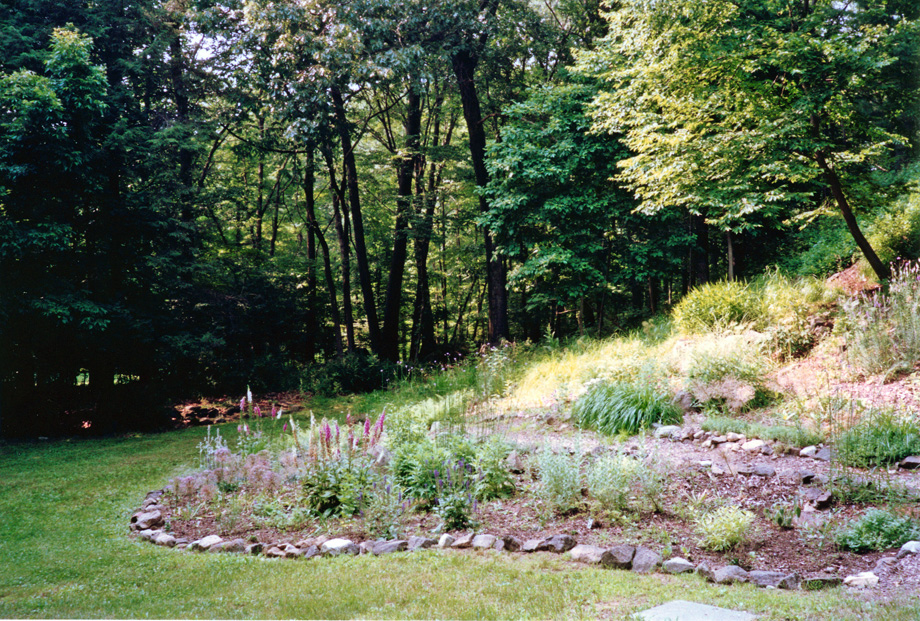Rock Hill
About the House
The rustic, hilltop house, with its wrap-around windows, simple furnishings, and woodsy setting, provides plenty of inspiration.The New York Times
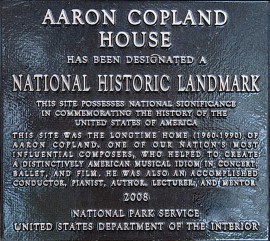
The house known as Rock Hill was built around 1940 on Lower Washington Street, in a section of the city of Peekskill that subsequently became Cortlandt Manor. Originally constructed by an architect for himself and his family, the six-room, prairie-style house and separate garage with duplex apartment sit atop 2.5 secluded, hilly acres in a quiet residential area. As you leave the road and ascend a long, winding driveway through the woods, Rock Hill gradually into view. Your first impressions are of lush woods and stone walls. Large picture windows afford a glimpse of knotty pine within.
Aaron Copland gave up his Manhattan apartment and studio for good in 1947. He initially rented a house on the banks of the Hudson River and then bought his first home in 1952 in Ossining. Quickly outgrowing the latter, he bought Rock Hill in 1960, and moved in following that summer's Tanglewood Festival. He was still surrounded by unpacked cartons when journalists from Time and Newsweek visited the house to interview him for his coming 60th birthday in November. Though born and raised in Brooklyn and a city-dweller for many years, Copland adored country living, and this house in particular. His memoirs convey the excitement of his initial impression of Rock Hill:
One look at the grounds with the Hudson in the distance, the gardens, and woods, and the house with the separate studio, and I was sold! When I first saw the studio, I said that it looked like a room where a composer could write music. Aaron Copland
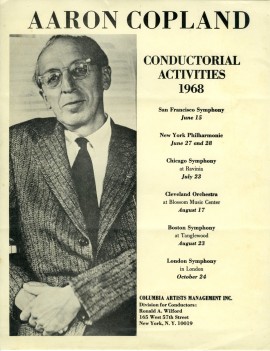
He lived at Rock Hill for three decades, longer by far than any of his previous homes.
During those years, Rock Hill served as Copland’s base for his multifaceted international career. Although his compositional activities were then winding down, Copland worked on several important compositions at Rock Hill, including the Nonet for strings, Emblems for symphonic band, the orchestration of much of the great Eight Poems of Emily Dickinson, the Duo for flute and piano, the orchestral works Connotations (for Lincoln Center’s inauguration) and Inscape (for the New York Philharmonic’s 125th Anniversary), and the film score for Something Wild and the large symphonic work that he derived from it, Music for a Great City (for the London Symphony). He was also extensively active as a conductor, recording artist, author, lecturer, and, as always, tireless proponent of contemporary music. Rock Hill was a mecca of musical activity and destination for aspiring young composers, colleagues, interviewers, scholars, and schoolchildren.
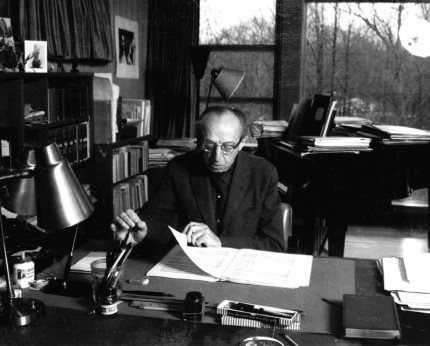
While Copland House was always intended to be a living tribute and active workplace, rather than a museum or shrine, reminders of Copland’s presence abound. His own workdesk (made of wide-plank barnwood supported by a simple saw-horse-like base, characteristic in its simplicity and practicality) still stands where Copland placed it in the studio – next to a grand piano by Baldwin, which provided him with instruments for many years, and a Harvard chair.
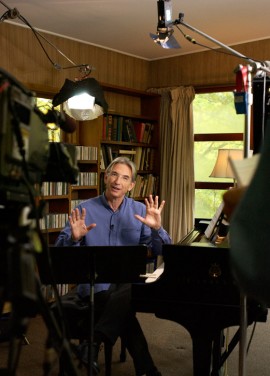
Conductor Michael Tilson Thomas filming one of his acclaimed PBS-TV Keeping Score telecasts in Copland’s studio.
On display at Rock Hill are photos of Copland and his friends and colleagues, musical and literary books and periodicals that he loved to read, and various other memorabilia. A mature forest now obscures Copland’s beloved view of the nearby Hudson River, but instead provides a curtain of privacy and serenity around the house. Spare, practical, unostentatious, at one with the environment—Rock Hill is a symbol of Copland’s values and personality, and reflects the “atmosphere of tranquility and seclusion” that was so important to him.
Rock Hill has served as on-camera or audio locations for productions of National Public Radio, the British Broadcasting Corporation (BBC-TV and BBC Radio 3), Public Broadcasting Service (PBS-TV), NHK (Japan), and many others. For more information, contact our office.
Guided tours of Rock Hill for individuals or groups are scheduled by appointment only. Admission is $10 per person; group admission varies according to size. For more information, contact our office.
Photo Tour of Rock Hill
From an unobtrusive entrance at the road, the visitor ascends a long, winding driveway through the woods...
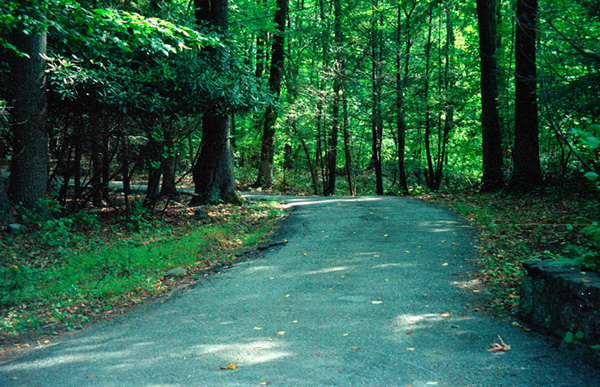
... and arrives at the back of the house, as seen from the driveway.
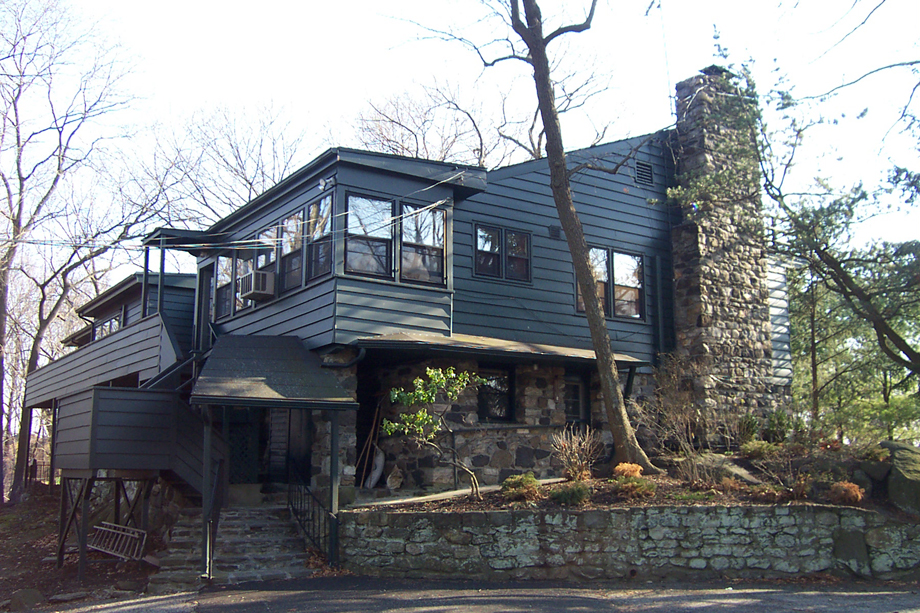
Proceeding around to the right, the west facade of the house comes into view, with Copland's music studio at the far right.
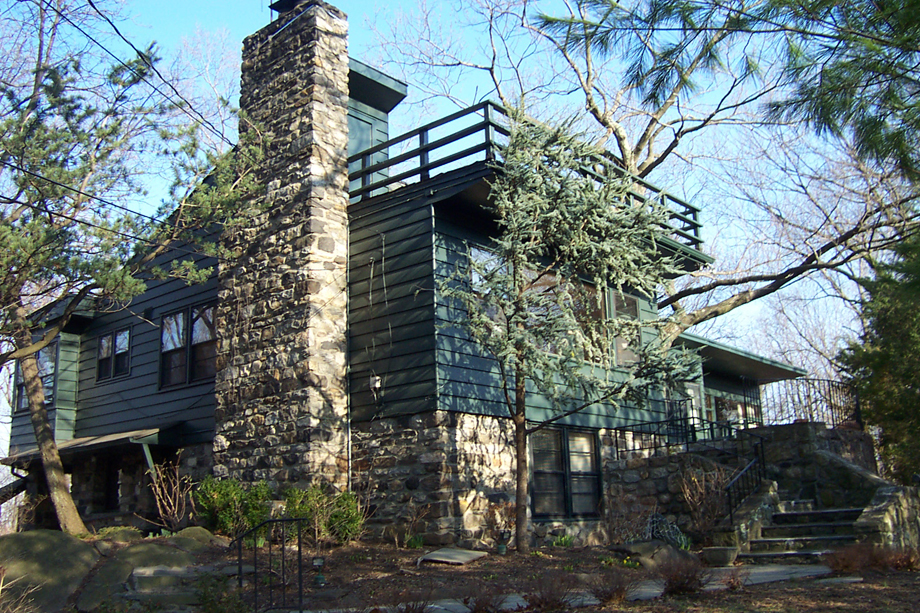
The studio, as seen from the grounds below.
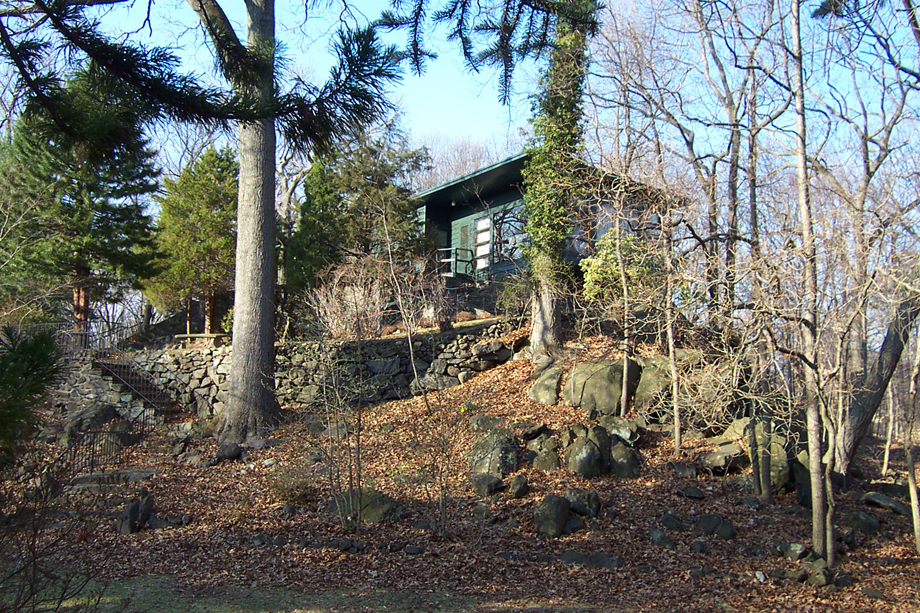
Walking up the front steps leads to the terrace that runs the length of the house, with a ramp leading to the entrance of the studio.
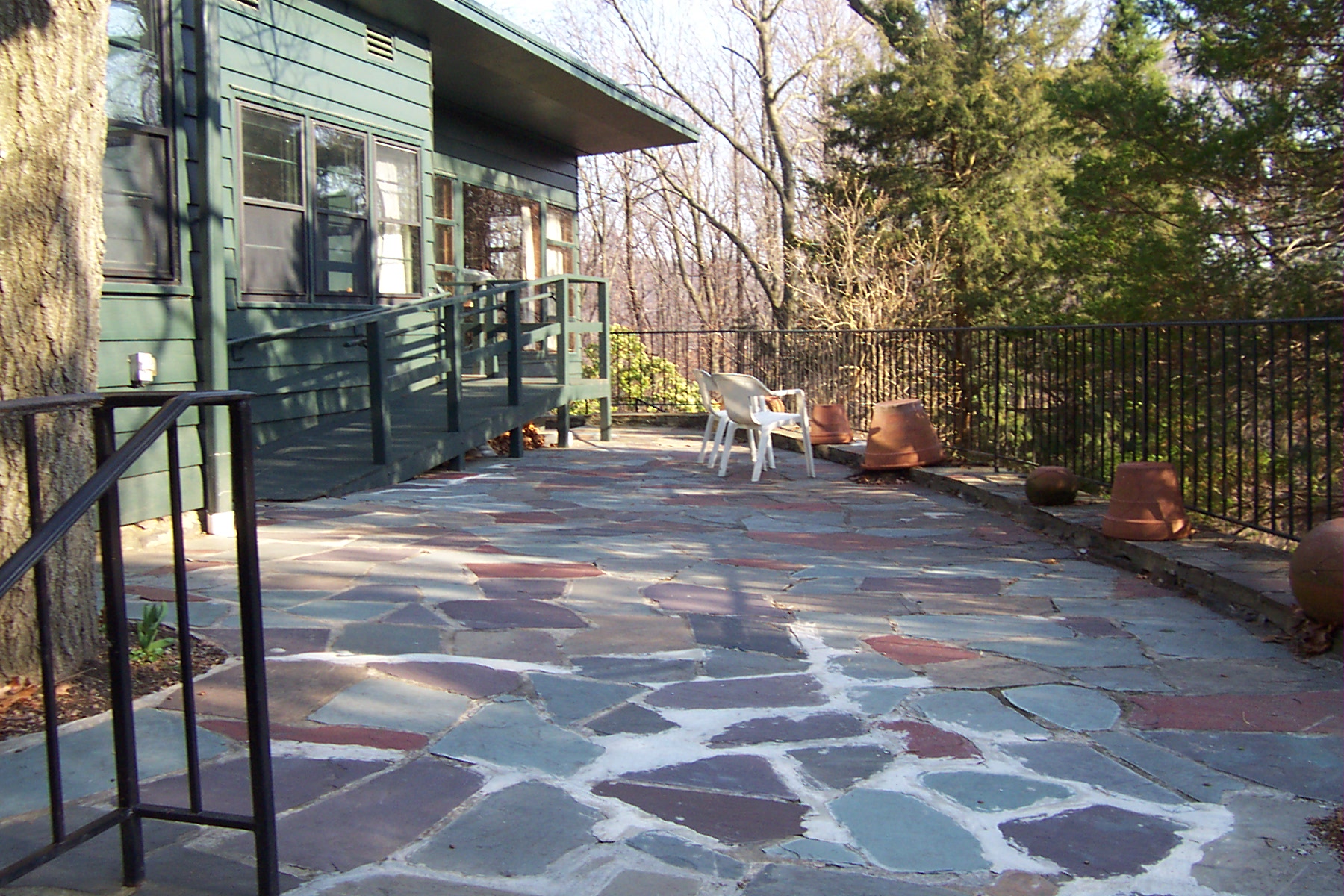
The glass-walled studio is largely as Copland left it. In the foreground is his beloved workdesk, made for him in the 1950s by a local farmer. At rear is a Baldwin grand piano very similar to the one that occupied this space for decades. The room also contains music books and a wide-ranging collection of compact-disc recordings of music by Copland, many American composers, and Copland House residents.
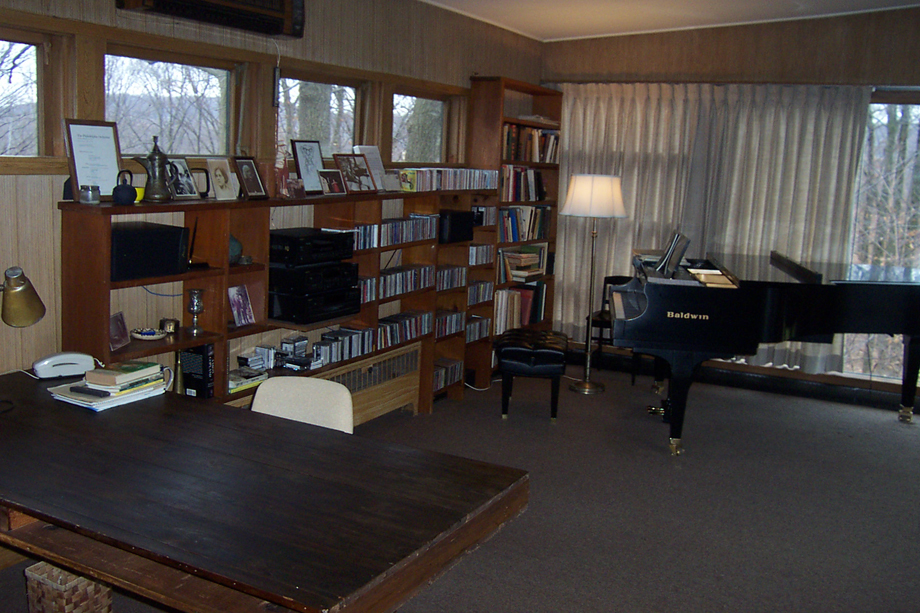
Adjacent to the studio are the master bedroom, containing Copland's collection of The Musical Quarterly journals dating back to the issue with his first published article (September 1924, on Faure), and ...
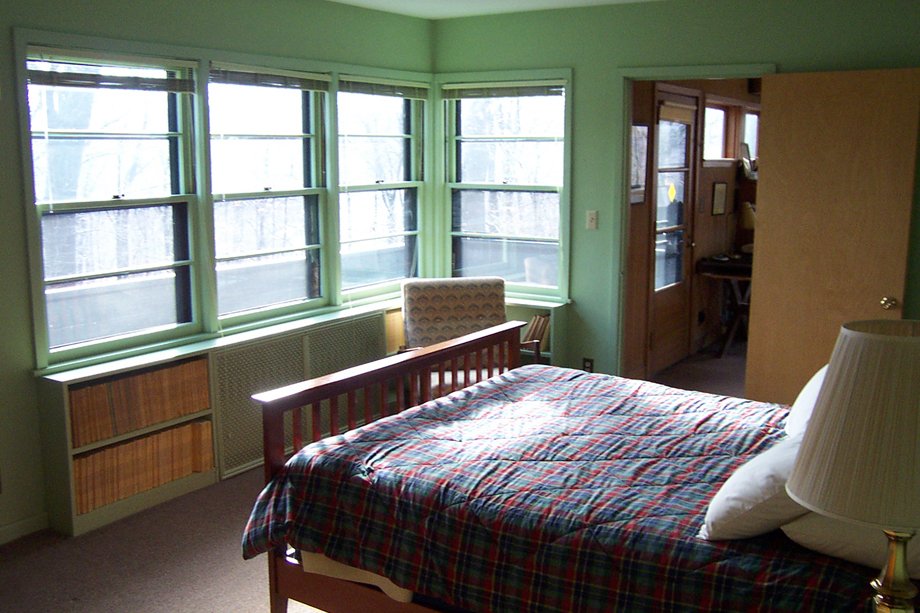
... the Library, providing additional work space.
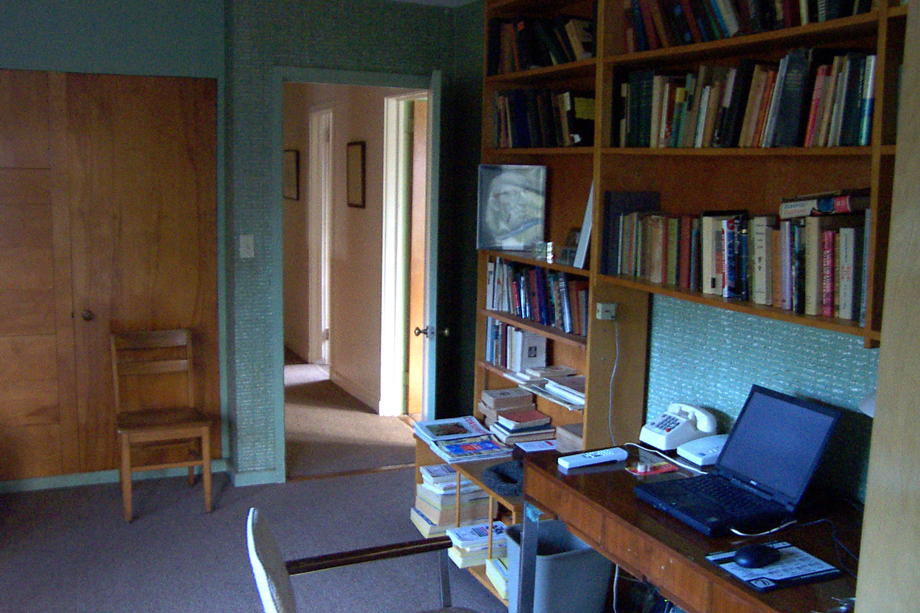
A corridor passes the guest bedroom, and then leads to ...
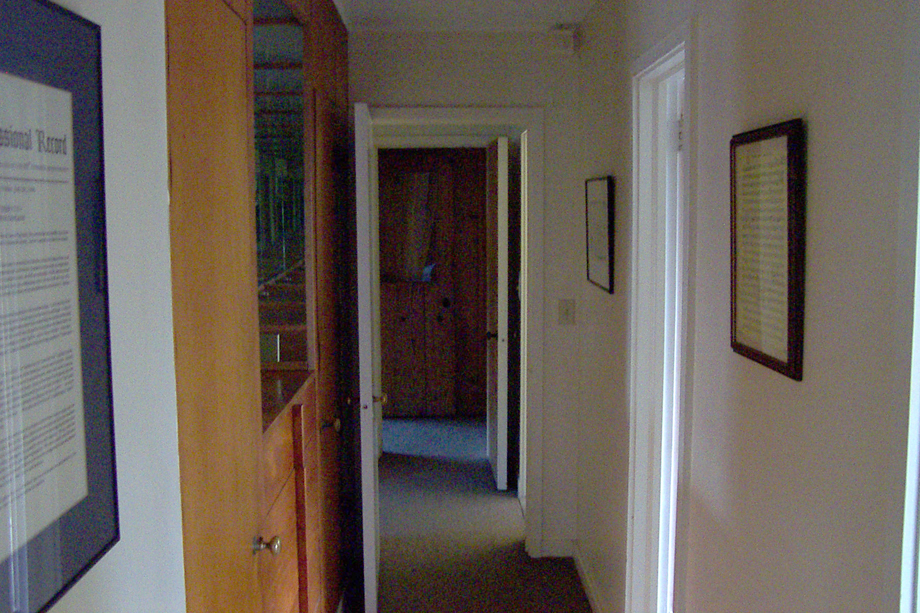
... the spacious, rustic living room, seen here in the bright afternoon sun. One portion of the room houses the Perlis Corner, named for the much-admired American music scholar, oral historian, and Copland memoirst, in gratitude for her generous donation of original Copland memorabilia and documents.
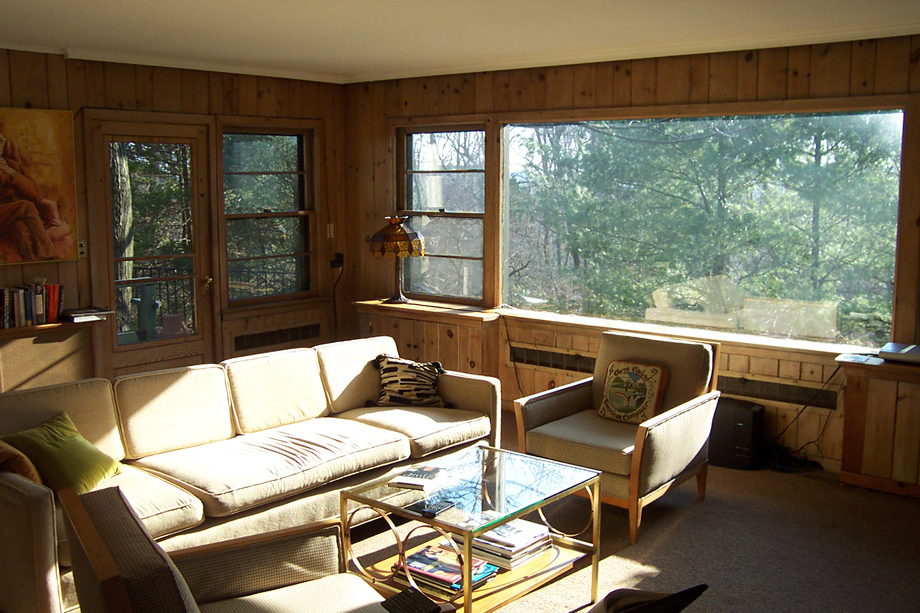
The dining area is located in another corner of the living room, right next to ...
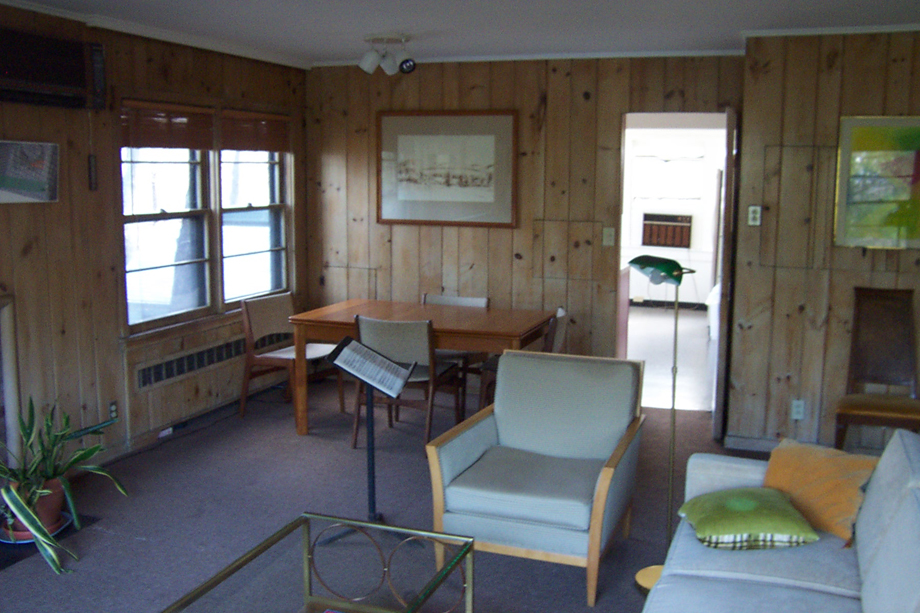
... the airy kitchen, with its full eastern exposure.
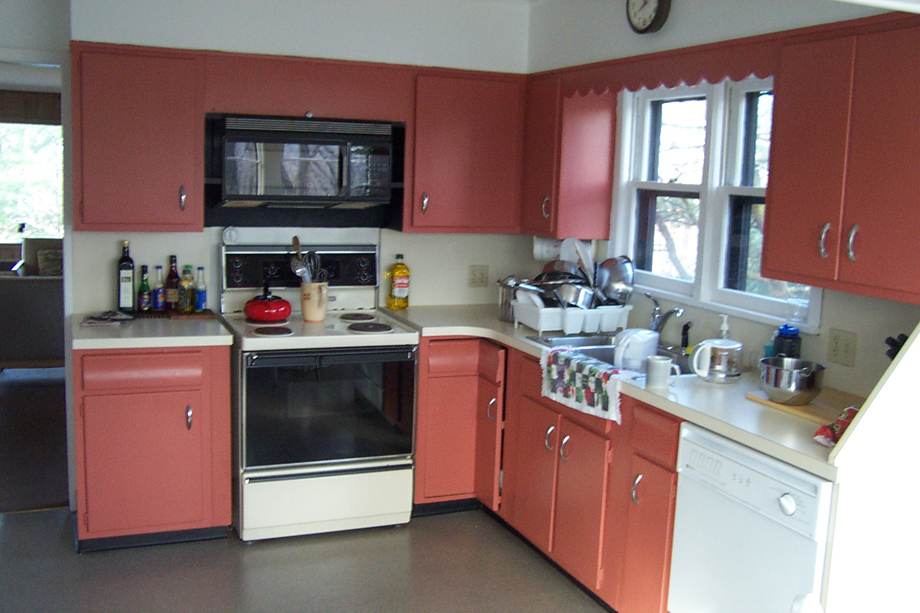
Photo Tour of the Gardens
The lovely grounds below Copland’s home consist of a two-tiered garden ringed by natural woods. Westchester County Master Gardener volunteers began working at Rock Hill in 2000, initially tackling massive overgrowth of the landscaped portions of the property. Few photos exist showing the gardens as they were during the years Copland lived here (1960-1990), but numerous specimen trees and a few remaining ornamental shrubs, as well as the wonderful natural rock formations, provided the framework to restore the property as a well-cared-for woodland site.
Volunteers have worked weekly from spring through fall since 2000, leading, among other things, to the uncovering of a beautiful rock garden, the planting of a hearty type of dogwood tree called Appalachian Spring, and the creation in Fall 2004 of a “blue garden” – something Copland reportedly liked to have wherever he lived, as a personal tribute to his revered teacher Nadia Boulanger and her favorite color. Every autumn, hundreds of daffodil and allium bulbs are planted, to make springtime at Rock Hill a joyous experience.
The Master Gardeners are working to replace invasive plants with natives and others that are in harmony with the tranquility of the property, easily sustainable, and supportive of the biodiversity of the Hudson River Valley. In 2009, the National Wildlife Foundation designated the property a Certified Wildlife Habitat, because it provides the four basic elements needed to thrive: food, water, cover, and places to raise young. Since the resident deer population has come to believe that we humans are trespassing on their property, we try to be respectful by not tempting them with plants that might cause them to overeat!
This is a large but enjoyable and rewarding undertaking. It is also a work-in-progress. We welcome anyone who might enjoy gardening at this wonderful National Historic Landmark, or otherwise helping to re-claim and sustain this inspiring oasis.
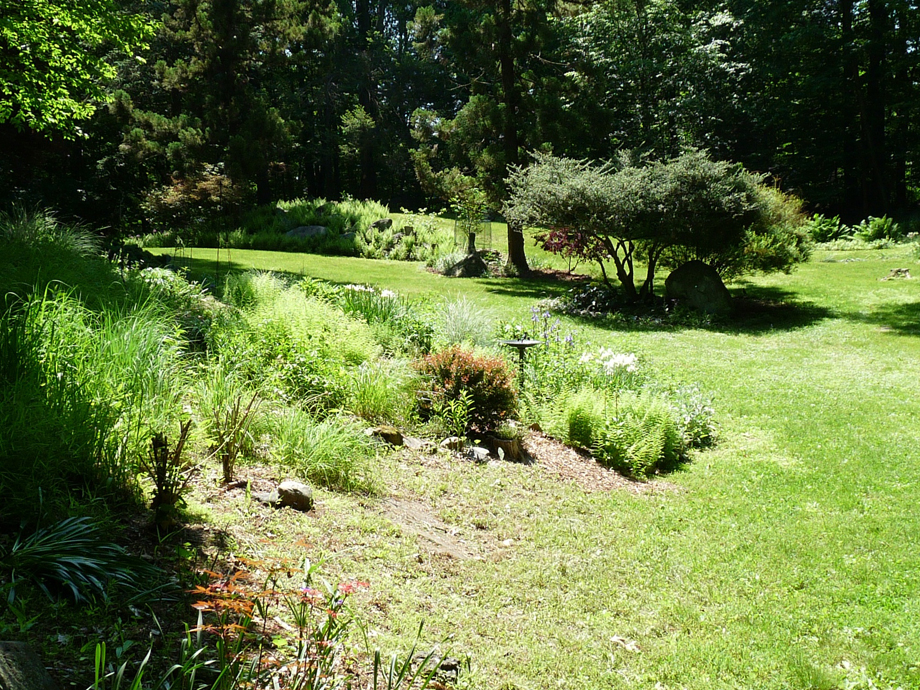
The Master Gardeners are working to replace invasive plants with natives and others that are in harmony with the tranquility of the property, easily sustainable, deer-resistant, and supportive of the biodiversity of the Hudson River Valley. In 2009, the National Wildlife Foundation designated the property a Certified Wildlife Habitat, because it provides the four basic elements needed to thrive (food, water, cover, and places to raise young).
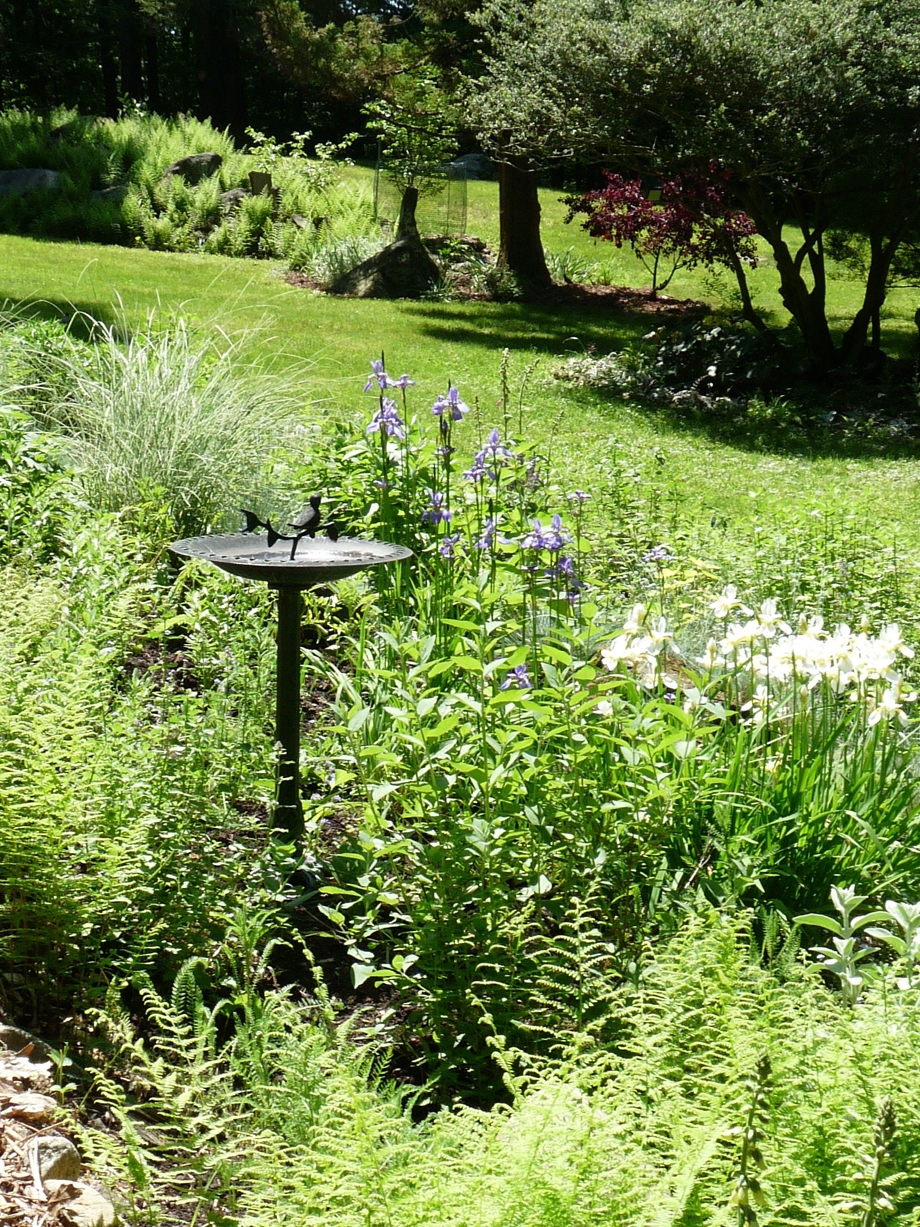
The property below Copland’s home consists of a two-tiered garden ringed by natural woods. Westchester County Master Gardener volunteers began working at Rock Hill in 2000, initially tackling massive overgrowth of the landscaped portions of the grounds. Few photos exist showing the gardens as they were during the years Copland lived here (1960-1990), but numerous specimen trees, a few remaining ornamental shrubs, and the wonderful natural rock formations, provided the framework to restore the property as a well-cared-for woodland site.
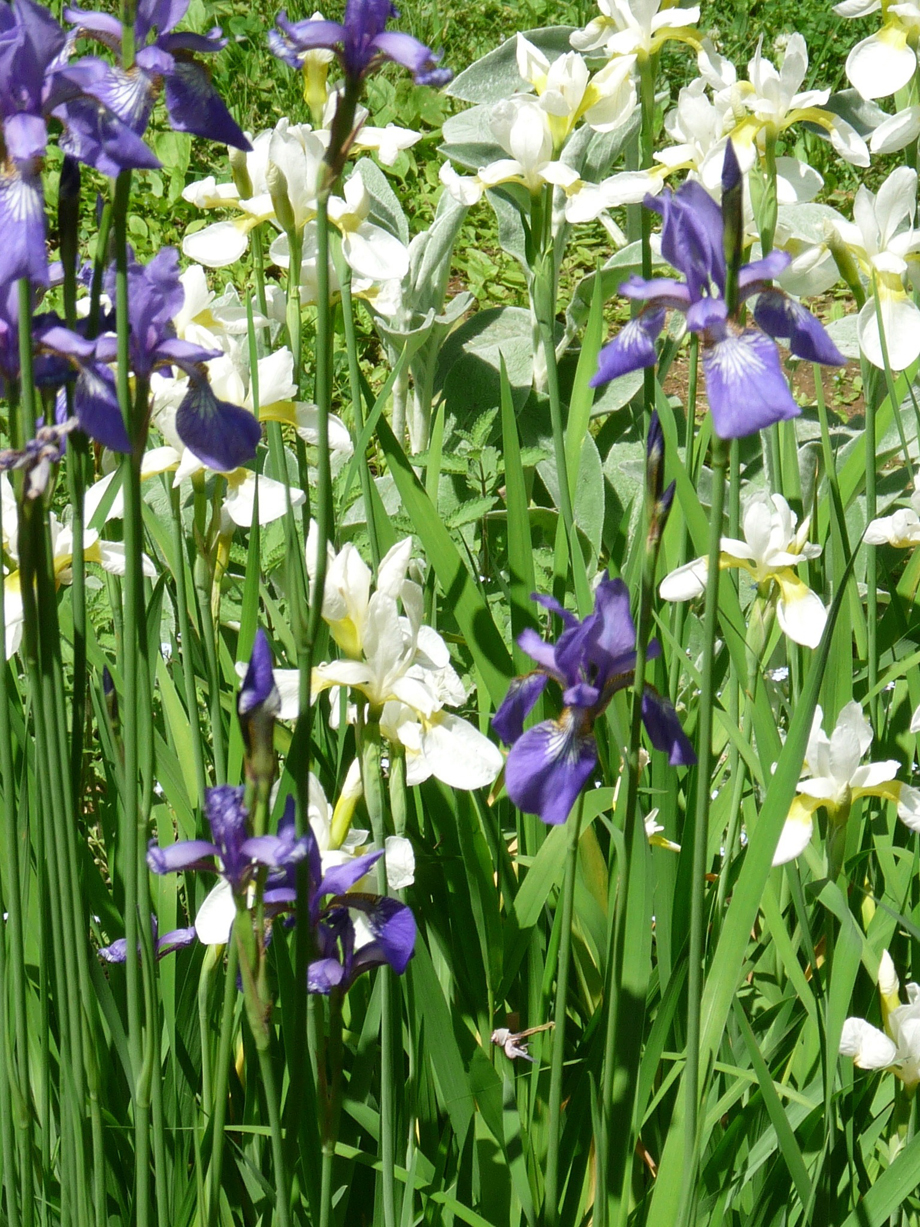
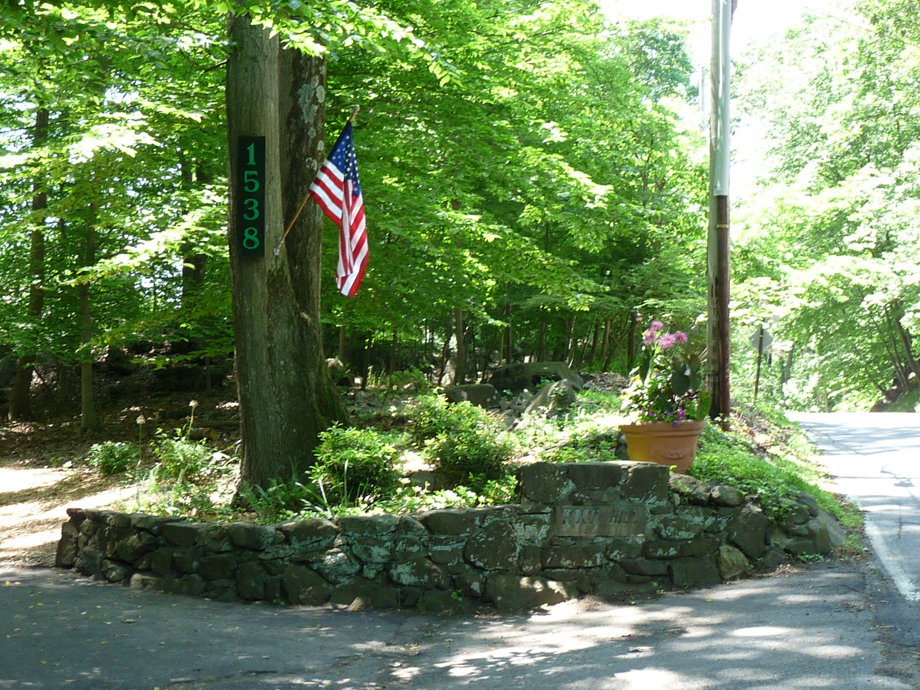
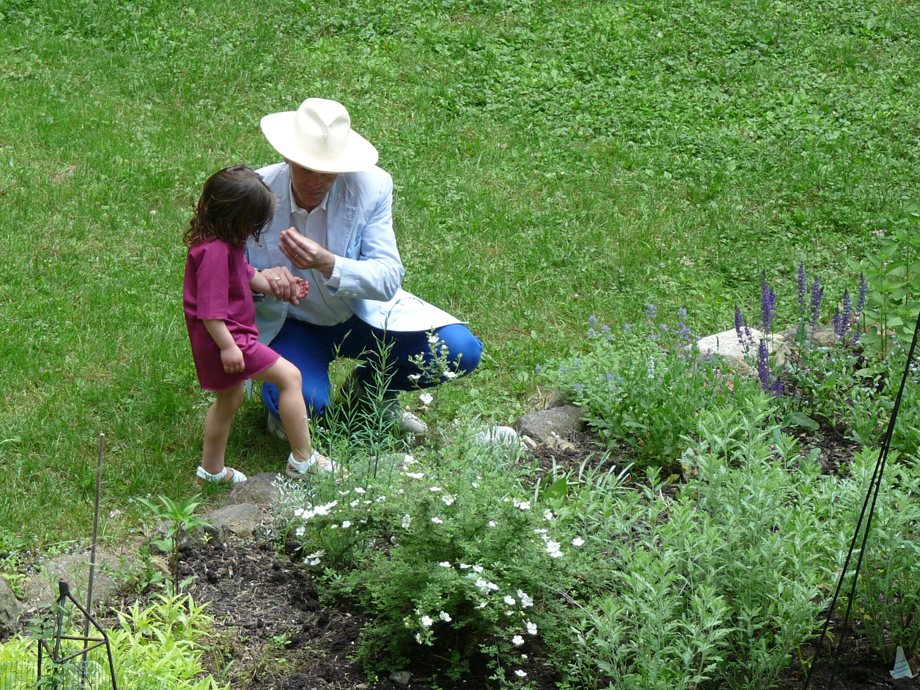
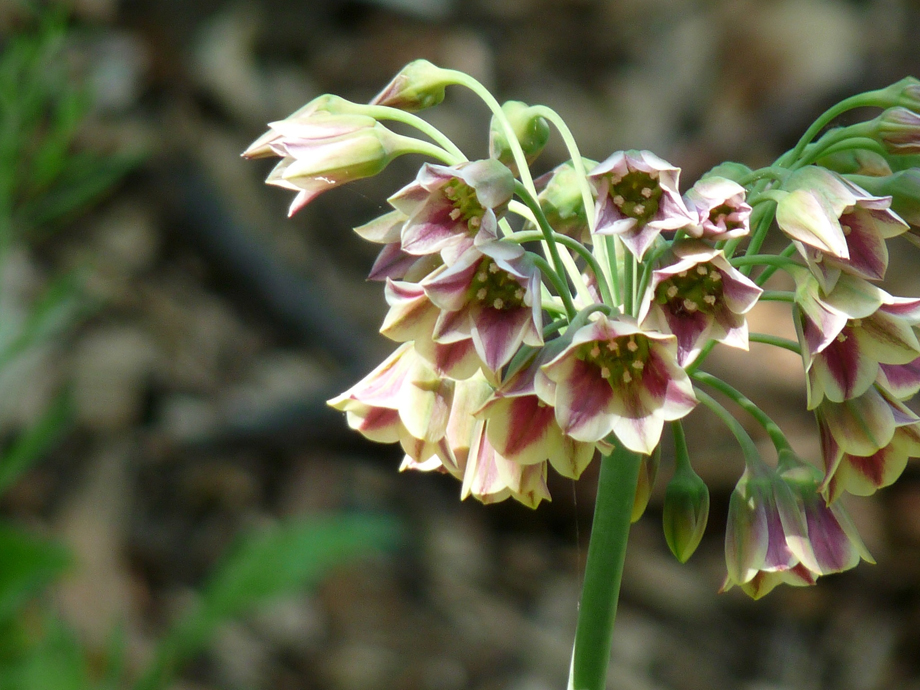
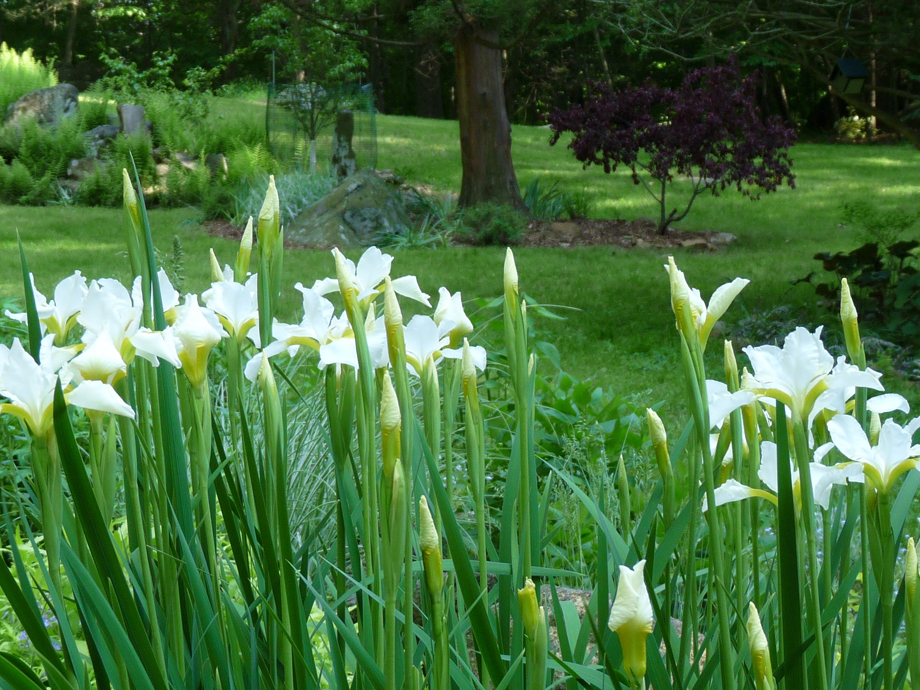
This is a large but enjoyable and rewarding undertaking, and Copland House is greatly indebted to the steadfast loyalty and tireless efforts of Patricia Reber (3rd from left in photo) and our core Master Gardener team, including (clockwise from left) Sharon Persinger, Karen Trepp, Lois Koeber, Sara Doherty, Carol Barreiro, and Steve and Mattie Varvaro (Steve Doherty not shown). It is also a work-in-progress, and we welcome anyone who might enjoy gardening or otherwise helping to re-claim and sustain this inspiring oasis. Contact us (link to /contact/) for more information.
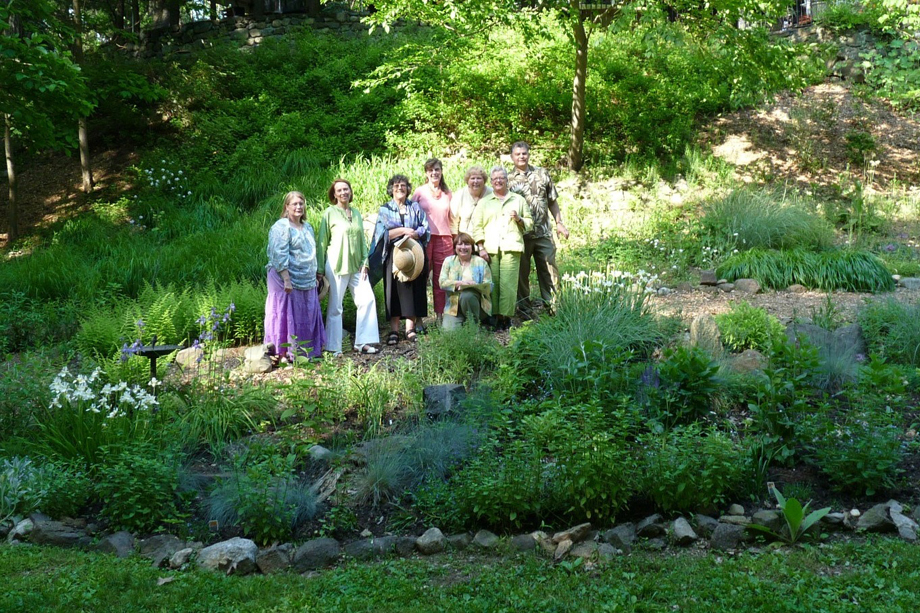
Volunteers have worked weekly from spring through fall since 2000, leading, among other things, to the uncovering of a beautiful rock garden, the planting of a hearty type of dogwood tree called Appalachian Spring, and the creation in Fall 2004 of a “ blue garden”—something Copland reportedly liked to have wherever he lived, as a personal tribute to his revered teacher Nadia Boulanger and her favorite color. Every autumn, hundreds of daffodil and allium bulbs are planted, to make springtime at Rock Hill a joyous experience.
